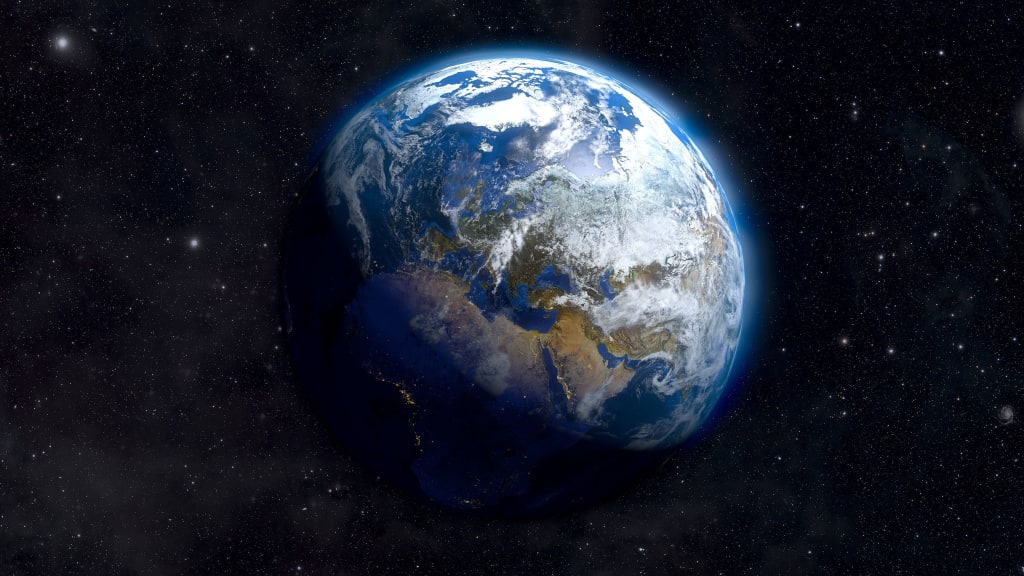
Starting with our home planet 'Earth'.
CHARACTERISTICS:
I can tell you that Earth is a unique and remarkable planet in many ways. One of its most notable features is the presence of life, which has evolved over billions of years to create a diverse array of species and ecosystems. Atmosphere of Earth is composed of a delicate balance of gases that allow for the existence of life. The atmosphere also protects the planet from harmful radiation and helps regulate the planet's temperature.
The atmosphere is composed of a mixture of gases, including nitrogen, oxygen, carbon dioxide, and trace amounts of other gases. This mixture of gases is just right to allow for the existence of life, as it provides the necessary oxygen for respiration and carbon dioxide for photosynthesis. The greenhouse effect, which is caused by the presence of certain gases in the atmosphere, helps to trap heat and keep the planet warm enough to support life. However, too much greenhouse gas can lead to global warming and climate change, which is a major concern for our planet.
Earth's magnetic field shields the planet from the solar wind and cosmic rays. This magnetic field is generated by the planet's molten core, which is made up of iron and nickel, which also drives plate tectonics and creates the geological features we see on the planet's surface. This magnetic field helps to protect the planet from harmful solar radiation and cosmic rays, which can be damaging to life on Earth. The magnetic field also plays a role in creating the auroras, which are beautiful displays of light in the polar regions.
Earth's position in the solar system is significant, as it is located in the habitable zone around the sun, where temperatures are just right for liquid water to exist. This has allowed for the development of life on our planet, making it a truly remarkable and special place in the universe.
BEHAVIOR:
Earth rotates on its axis once every 24 hours, which creates the cycle of day and night. This rotation also causes the Coriolis effect, which influences the movement of air and water around the planet. The rotation of the Earth also causes the planet to bulge slightly at the equator and flatten at the poles. Earth also orbits around the sun once every 365.25 days, which creates the cycle of seasons. The tilt of the Earth's axis relative to its orbit around the sun causes different parts of the planet to receive different amounts of sunlight throughout the year, which leads to the changes in temperature and weather patterns that we experience.
Physical properties:
Earth is stunningly beautiful and the only planet we can live in until Elon proves us wrong, with a vast array of landscapes, ecosystems, and natural wonders that are truly awe-inspiring. From the towering peaks of the Himalayas to the vast expanse of the Amazon rainforest, there is no shortage of breathtaking scenery to explore. The oceans, too, are a source of endless fascination, with their teeming coral reefs, majestic whales, and mysterious deep-sea creatures. Even in the midst of bustling cities, there is beauty to be found in the architecture, art, and culture that humans have created.
One of the most striking features of Earth is its incredible diversity. From the frozen tundra of the Arctic to the sun-drenched savannas of Africa, there is a seemingly endless variety of landscapes and ecosystems to discover. Each of these regions is home to a unique array of plants and animals, each perfectly adapted to its particular environment. Whether you're exploring the lush rainforests of South America or the rugged mountains of New Zealand, there is always something new and exciting to discover.
But it's not just the natural beauty of Earth that makes it so special. Humans have also left their mark on the planet, creating stunning works of art and architecture that are a testament to our creativity and ingenuity. From the towering skyscrapers of New York City to the ancient temples of Angkor Wat, there is no shortage of man-made wonders to marvel at.
Perhaps most striking of all, however, is the delicate balance that exists between all of these elements. The natural world and the human world are inextricably linked, and each depends on the other for its survival. The beauty of Earth lies not just in its individual components, but in the way that they all work together to create a world that is both awe-inspiring and fragile.
In the end, it is this delicate balance that makes Earth so precious and so worth protecting. As we continue to explore and discover the wonders of our planet, we must also work to preserve them for future generations. Whether we're admiring a stunning sunset over the ocean or marveling at the intricate patterns of a snowflake, we are reminded of the incredible beauty and complexity of the world around us. And that, perhaps, is the greatest gift of all.
About the Creator
Captain Kidd
I am thrilled to invite you to an extraordinary adventure. A journey through the vast and mysterious realm of outer space, promises to be both educational and awe-inspiring, as we explore the wonders of the cosmos together.
Enjoyed the story? Support the Creator.
Subscribe for free to receive all their stories in your feed. You could also pledge your support or give them a one-off tip, letting them know you appreciate their work.






Comments
There are no comments for this story
Be the first to respond and start the conversation.